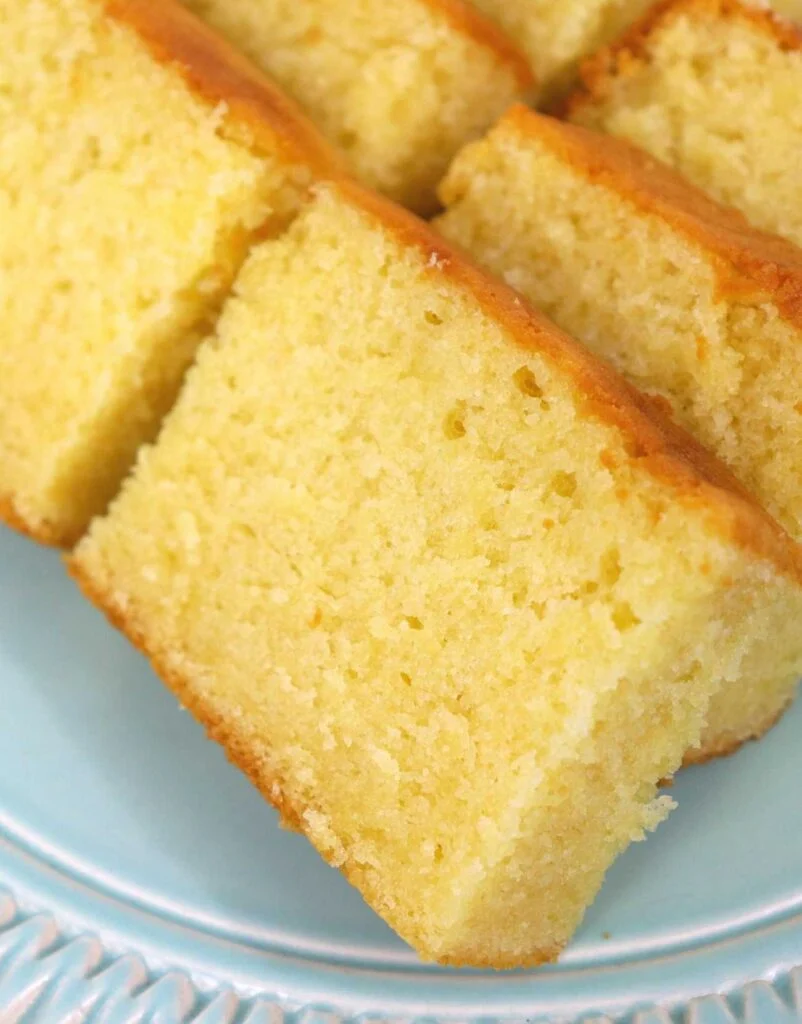When it comes to timeless desserts, nothing beats a classic butter cake. With its rich, buttery flavor, soft crumb, and golden crust, this cake is a favorite across generations. In this article, I’ll walk you through a detailed step-by-step butter cake recipe and share tips to guarantee success.
1. Butter Cake Recipe (Serving: 14)
Ingredients
-
1 cup (220 g) butter – salted
-
1 cup (220 g) caster sugar – regular white granulated sugar works too
-
1 tbsp unflavoured vegetable oil – canola or sunflower oil recommended
-
5 large eggs
-
1¾ cups (220 g) all-purpose flour – cake flour is a great option too
-
3 tsp baking powder
-
½ cup (112 g) buttermilk
-
1½ tsp vanilla essence or extract
Equipment
-
Mixing bowls (large and medium)
-
Hand mixer or stand mixer with paddle attachment
-
Rubber spatula
-
Measuring cups and spoons
-
9-inch round or square cake pan (or loaf pan)
-
Parchment paper (optional)
Instructions
Step 1: Prepare your pan and oven
Preheat your oven to 350°F (175°C). Grease your cake pan with butter or line it with parchment paper for easy removal. Lightly dust with flour if desired.
Step 2: Cream the butter and sugar
In a large mixing bowl, beat the butter and caster sugar together using a hand or stand mixer until light and fluffy—about 3–5 minutes. This process incorporates air, giving your cake a soft, tender crumb.
Step 3: Add the oil and eggs
Mix in the tablespoon of vegetable oil. Add the eggs one at a time, beating well after each addition. Scrape down the sides of the bowl to ensure even mixing. The batter may look slightly curdled at this stage, but it will smooth out once the dry ingredients are added.
Step 4: Combine the dry ingredients
In a separate bowl, sift together the flour and baking powder. Sifting removes lumps and evenly distributes the leavening agent.
Step 5: Alternate dry ingredients and buttermilk
Add the flour mixture to the butter-egg mixture in three additions, alternating with the buttermilk. Begin and end with the flour. Mix on low speed until just combined—avoid overmixing, as this can toughen the cake.
Step 6: Add the vanilla
Stir in the vanilla extract, ensuring it’s well incorporated.
Step 7: Bake the cake
Pour the batter into your prepared pan and smooth the top with a spatula. Bake for 40–50 minutes, depending on your oven and the type of pan used. The cake is done when a toothpick inserted into the center comes out clean or with a few moist crumbs.
Step 8: Cool and serve
Allow the cake to cool in the pan for 10 minutes before transferring it to a wire rack to cool completely. Once cooled, slice and enjoy plain or with your favorite toppings.

2. Tips for Perfect Homemade Butter Cake
Butter cake is simple to make, but these tips will help you get bakery-quality results every time:
Use room temperature ingredients – Butter, eggs, and buttermilk blend better and trap more air when they’re at room temperature.
Cream thoroughly – Don’t rush the creaming step. Beating butter and sugar until pale and fluffy ensures a lighter texture.
Measure carefully – Too much flour can make the cake dense. Spoon and level the flour rather than scooping directly.
Don’t overmix after adding flour – Overmixing develops gluten, leading to a tougher cake. Mix just until everything is combined.
Test for doneness – Ovens vary, so check your cake a few minutes before the suggested baking time ends.
Cool before slicing – Letting the cake rest allows the crumb to set, preventing it from crumbling apart.
3. Variations & Substitutes
The beauty of butter cake is how easily it adapts to your creativity. Here are some fun ways to change it up:
Citrus butter cake – Add 2 tablespoons of lemon or orange zest to the batter for a fresh twist.
Marble butter cake – Divide the batter into two bowls. Stir cocoa powder into one portion and swirl the two together before baking.
Nutty version – Fold in ½ cup chopped almonds, pecans, or walnuts for extra crunch.
Buttermilk substitute – If you don’t have buttermilk, mix ½ cup milk with 1½ teaspoons lemon juice or vinegar. Let sit for 5 minutes before using.
Gluten-free option – Replace the flour with a 1:1 gluten-free baking blend.
Layer cake base – Double the recipe, bake in two 9-inch pans, and use as a base for layered cakes with buttercream or ganache.
Fruit topping – Serve slices with macerated berries, a dusting of powdered sugar, or a drizzle of caramel sauce.
4. How to Store Leftovers Butter Cake
Butter cake keeps well, so you can bake it ahead of time and enjoy it throughout the week.
Room temperature: Store the cooled cake in an airtight container or wrap tightly in plastic wrap. It will stay fresh for 2–3 days.
Refrigerator: For longer storage, refrigerate for up to 5–6 days. Bring to room temperature before serving for the best flavor and texture.
Freezer: Wrap individual slices or the whole cake tightly in plastic wrap and foil. Freeze for up to 3 months. Thaw overnight in the fridge or at room temperature before enjoying.
This easy homemade butter cake recipe is proof that simple ingredients can create something extraordinary. With its rich flavor, tender crumb, and versatility, it’s no wonder butter cake is a beloved classic worldwide.
So next time you’re in the mood for a comforting dessert, skip the store-bought cakes and whip up this homemade butter cake—it’s simple, delicious, and guaranteed to become a family favorite.
